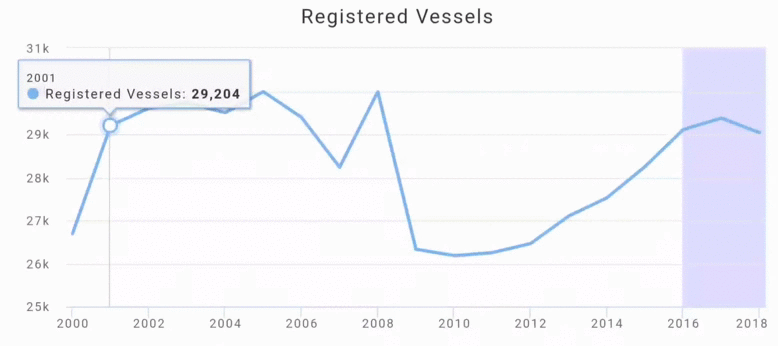The Florida Keys Integrated Assessment (IEA) team, led by AOML in partnership with managers and scientists from the Office of National Marine Sanctuaries, launched a new Ecosystem Status Report web tool on May 13th. The IEA approach aims to balance the needs of nature and society through Ecosystem-Based Management. It provides scientific knowledge of the Florida Keys National Marine Sanctuary ecosystem to scientists, policy makers and resource managers.
The web tool highlights key indicators that illustrate the condition of the Florida Keys National Marine Sanctuary. These indicators are categorized by human activities, ecosystem services, habitat, living resources, sanctuary waters, and maritime heritage. The web tool allows stakeholders, resource managers and researchers to easily visualize status and trends of key indicators over time and across disciplinary fields.
“One of the most valuable aspects of this site are the visualization tools that allow the user to see the changes in resource condition over time,” Bruckner said.
Indicators are separated by section in the drop down menu in the upper right hand corner to mirror the Office of National Marine Sanctuaries condition report sections. Users can explore these different sections and their indicators to get a quick summary of the condition of different aspects of the ecosystem and socio-economic components of the community. For example, by selecting Human Activities and then scrolling down to Registered vessels, changes in the specific number of vessels can be observed by scrolling your mouse along the line graph. This project was led by AOML researchers and includes data sources and expert input from AOML scientists.
One finding of the Ecosystem Status Report is an increasing trend in public participation and appreciation for the Florida Keys National Marine Sanctuary’s cultural heritage resources. Key findings for human activities were drawn from the status and trends of Florida Keys resident populations, cruise ship visitors, registered vessels, and housing units connected to wastewater treatment. Florida Keys resident populations have increased over the last century, putting pressure on the ecosystem. However, populations have leveled out since the 1980s. Leveled or decreasing populations have changed the human activities in the Keys.
Ecosystem services in the Florida Keys National Marine Sanctuary include commercial and recreational fishing, tourism, and coastal protection. Trends in the total number of commercial fishing trips and the total number of trips targeting economically important species show that there is a stable, or decreasing, pressure on these resources. Tourism has increased in the last 30 years. Sanctuary resources can help to support the tourism value of the Keys as an ecosystem service to the community.
This report notes a decrease in the total number of registered vessels as well as the total tourism value in Monroe County in response to the 2008 Recession. The IEA team also found that there has been a decline in five coral species at monitoring sites. Seagrass is currently in a period of continued decline since 2014. However, coral resilience to bleaching and disease has been seen at some patch reefs. Lastly, a reduction in pressure on marine sanctuary water quality was found due to an increase in housing units connected to a central sewer system instead of aging septic tanks and cesspools.
The Florida Keys Integrated Assessment is led by CIMAS researcher Kelly Montenero, and the web tool was built by Seann Regan from NOAA National Center for Coastal Ocean Science. The Ecosystem Status Report was compiled by NOAA’s Florida Keys Integrated Ecosystem Assessment Program effort, in collaboration with academic partners, Sanctuary resource managers and scientists, non-governmental organizations, and other government and state agencies.

